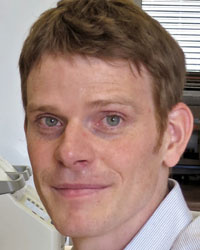Florian Steiner Group

Project at a glance
Organization of centromeric chromatin in C. elegans
The centromere is a defining feature of eukaryotic chromosomes and is essential for the segregation of chromosomes during cell division, as it organizes the proteinaceous kinetochore for attachment to the spindle apparatus at mitosis. Aberrant centromere formation leads to aberrant chromosome segregation and aneuploidy, which is a widespread characteristic of cancer cells. C. elegans centromeres are different from most other organisms in that chromosomes are holocentric, and centromeric nucleosomes are localized to discrete sites that are distributed along the length of the chromosomes. These features make C. elegans an attractive model to study centromeric chromatin, as the low abundance of tandem repeats allows mapping of centromeric nucleosomes, and the interaction between centromeric nucleosomes and the kinetochore can be analyzed. By studying centromeres in this model organism, we aim to understand the mechanism by which centromeric chromatin is formed and maintained.
Chromatin and gene expression in specific cell types
During the development of multicellular organisms, cells differentiate from undifferentiated progenitors into specialized cell types. How this differentiation is imposed and maintained is a central goal of developmental biology and is also important to understand how mistakes in this program can lead to diseases such as cancer. We utilize a simple and generally applicable strategy to purify specific cell types within an organism for simultaneous analysis of expression and chromatin profiles. The method is termed INTACT for isolation of nuclei tagged in specific cell types, and depends on the expression of an affinity-tagged nuclear envelope protein in the cell type of interest. These nuclei can be affinity purified from the total pool of nuclei and used as a source for RNA and chromatin. By applying this technique to different tissues at different stages of C. elegans development, we aim to understand the dynamic interplay between tissue-specific chromatin organization and gene expression.

